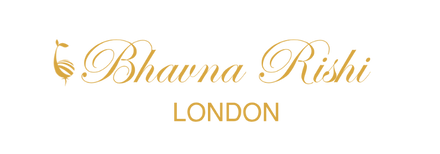Product Sourcing for Fashion Collections: A Comprehensive Guide
Posted by SALES BHAVNA

Product sourcing is a crucial step for fashion designers and brands looking to create high-quality, successful collections. This guide will help you navigate the complexities of finding the best suppliers and materials for your fashion collections, ensuring your products stand out in a competitive market. Efficient product sourcing is the foundation for the new startups and by sourcing the right materials and suppliers, you can create a collection of your dreams that meets your brand's values and resonates with your target audience.
Finding the Right Suppliers

Supplier Directories
Directories like ThomasNet, Alibaba, and Global Sources provide an extensive list of suppliers and manufacturers from various countries. Research and narrow down your options based on your needs, budget, and quality requirements.
Trade Shows
Attend fashion trade shows, such as Pure, Premiere Vision, and Texworld, Topdrawer to meet suppliers face-to-face, compare products, and build relationships that can lead to long-term partnerships.
Online Platforms
Utilize online platforms like LinkedIn, Instagram, and industry forums to connect with suppliers and gather recommendations from fellow designers and industry professionals.
Sustainable and Ethical Sourcing
Choose suppliers who prioritize environmental and social responsibility. Look for certifications like Fair Trade, GOTS (Global Organic Textile Standard), and Bluesign to ensure that your materials meet ethical and sustainable standards.
Textile Sourcing
Select textiles that align with your brand's aesthetic and values. Consider factors like material composition, quality, durability, and sustainability when choosing fabrics for your collection.
Quality Control and Communication
Maintain open communication with your suppliers to ensure they understand your requirements and expectations. Conduct regular quality checks, and request samples to verify that materials and products meet your standards.
Successful product sourcing for your fashion collection requires thorough research and networking by utilizing supplier directories, attend trade shows and, prioritizing sustainability, focusing on quality control and maintaining open communication with suppliers.
Once you have secured your supplier, you can start planning your collections that stands out and makes a lasting impact. Here are some tips to get you started from planning an idea to sampling,

Plan ahead
It's essential to begin your sourcing process early, allowing ample time for research, sampling, and production. The entire process can take up to six months, and thorough planning can significantly streamline the creation of your final product. Early planning helps in minimizing potential obstacles and delays, ensuring a smooth workflow and efficient use of resources.
Starting early also allows for contingency plans if you encounter issues with suppliers or materials. With more time, you can thoroughly evaluate alternatives, negotiate better deals, and establish stronger relationships with your partners.
Additionally, early planning enables you to identify and address any gaps in your collection and marketing strategy. This foresight can provide a competitive advantage by allowing you to proactively adapt to emerging trends or changing market conditions.
Define Your Sourcing Criteria
When sourcing fashion products, it's essential to establish clear criteria that align with your brand values and industry standards. These criteria may include aspects such as quality, materials, price, and ethical considerations. By outlining these requirements, you can efficiently find the right suppliers and materials to bring your vision to life.
Consider factors like durability, composition, and sustainability when selecting fabrics and materials. Evaluate suppliers based on their track record, certifications, and commitment to ethical and sustainable practices. Setting your sourcing criteria ensures that your collection meets the highest standards and caters to the increasing consumer demand for responsible and transparent supply chains.
Define Your Target Market
Defining your target market is a critical step in creating a successful fashion collection. Consider factors such as age range, gender, style, and budget when identifying your ideal customer. This understanding will help you design a collection that resonates with them and meets their needs, ultimately ensuring your brand's success.
To visualize your target customer, create a mood board featuring images representing their interests, preferred styles, and shopping destinations. This tool can help you develop a comprehensive understanding of their preferences, lifestyle, and aspirations. Additionally, consider your target market's values and how they align with your brand's mission and identity.
Conduct market research, including surveys, focus groups, and competitor analysis, to gather insights and validate your assumptions about your target audience. By understanding their needs, desires, and pain points, you can design a collection that addresses these factors, creating a unique and appealing offering that differentiates your brand in the competitive fashion landscape.
Set clear expectations
Communicate your design requirements, quality standards, and deadlines with your suppliers. Negotiate and close the best deal and remember to ask for discounts, clarify terms. By maintaining open communication, demonstrating professionalism, and setting clear terms, you can build lasting partnerships that will benefit your brand for years to come. Invest in clear techpacks and digital drawings to communicate your ideas to the suppliers. You can use Fiverr or Upwork to organise this.
Foster relationships
Build strong relationships with suppliers to ensure smooth communication and future collaborations. Establishing a solid rapport with your suppliers goes beyond just securing high-quality materials; it also helps create a reliable supply chain that can withstand the challenges of a fast-paced and competitive market.
Always honor your commitments and uphold your end of the partnership. Pay your suppliers on time, deliver on your promises, and be transparent about your business dealings. By demonstrating your integrity and reliability, you will earn their trust and respect, paving the way for smooth communication and future collaborations.
Stay organized
Keeping track of your sourcing efforts is vital for a streamlined process in the fashion industry. Utilize spreadsheets or project management tools to stay organized and monitor progress. Google Drive is an excellent option for sharing project details and updates with stakeholders, ensuring everyone is on the same page. This collaborative approach not only enhances transparency but also helps in quickly addressing any changes or issues, making the sourcing process more efficient and effective.
Be adaptable
Flexibility is crucial when sourcing materials for your fashion collection, as sampling may not always yield the desired results. Be prepared to pivot and explore alternative suppliers or materials if necessary. Adapt your materials, design, or functionality based on the insights gained from your initial prototype or sample.
Embracing this adaptable mindset will allow you to refine your collection and address any unexpected challenges that may arise during the sourcing process. Ultimately, being open to change and prepared to make adjustments will contribute to the creation of a high-quality, successful fashion collection that meets your vision and goals.
In conclusion,
Product sourcing is a critical aspect of building a successful fashion collection. By finding the right suppliers, prioritizing sustainability, and implementing effective communication strategies, you can create a collection that meets your brand's vision.
Furthermore, thorough planning, clear sourcing criteria, and a well-defined target market are also crucial elements for creating a successful fashion collection. By starting the sourcing process early, you can navigate potential obstacles, establish strong relationships with suppliers, and adapt to emerging trends.
Establishing sourcing criteria ensures your collection meets the highest standards while catering to the increasing consumer demand for responsible and transparent supply chains. Understanding your target market enables you to design a collection that resonates with them and meets their needs, ultimately ensuring your brand's success. By focusing on these essential aspects, you can create a fashion collection that stands out in the competitive landscape and leaves a lasting impact on your audience.
And if you need a helping hand, connect with us and lets have a chat. Book a complimentary call today to find out how we can bring your ideas to life,https://calendly.com/bhavnarishi

